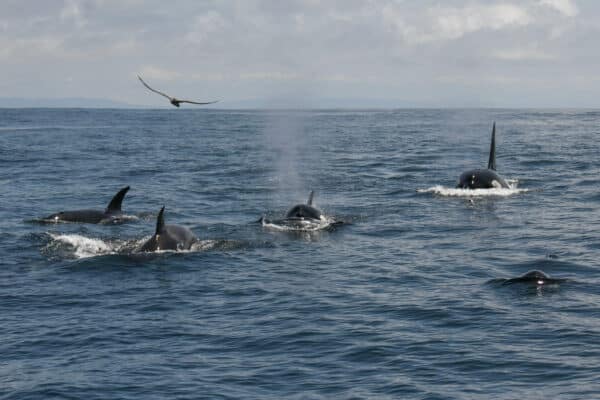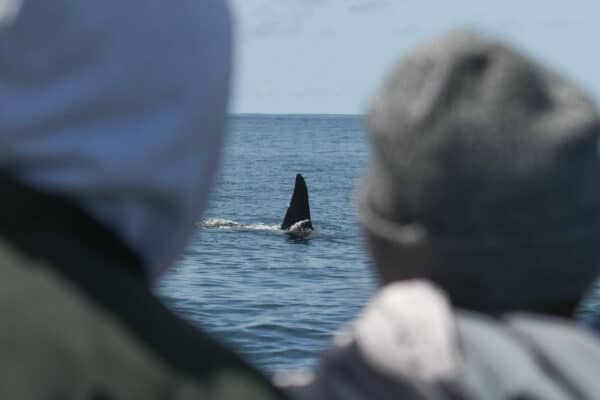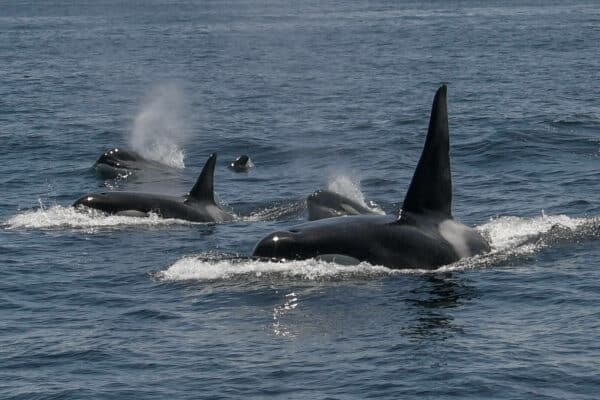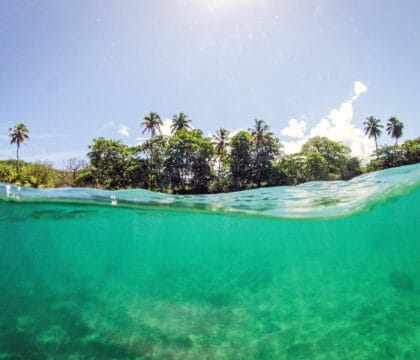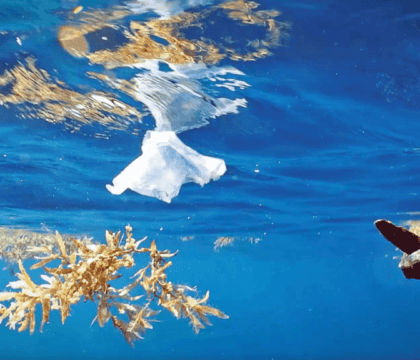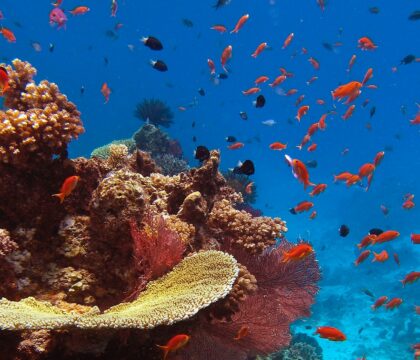May 26, 2023 • News Announcements, Ocean Facts, Trip Reports
On Sunday, May 7th, we had an exhilarating encounter with a large group of about 20 transient, or Bigg’s, killer whales near the Farallon Islands! These fascinating animals are the most common kind of killer whale seen in this area and are known as marine mammal hunting specialists. We have been fortunate to see transients on past Farallon Islands whale watching trips, including in June 2022 when we saw a pod that included an incredibly rare leucistic killer whale hunting a sea lion.
During our latest encounter, we were cruising along the continental shelf and spotted a few distant humpback whales before encountering the group of approximately 20 killer whales as we made our way north towards the Farallon Islands. Although we did not observe any predations (like we did this time), we were able to spend more than 40 exhilarating minutes with this mixed pod of killer whales before continuing on with our excursion. The length of our encounter gave us plenty of time to photograph the whales to share with our partners. Sightings and photographs provide important information for researchers who are working to identify individuals, estimate population sizes, and learn more about their lives.
In the words of naturalist Michael Pierson:
“The trip the previous day had been atypical, with lower than normal cetacean counts, so we decided to approach things a little differently this day. Instead of going directly east or north like normal, we elected to go south, as multiple species had been recorded on the acoustic monitoring station placed by Whale Safe and monitored by The Marine Mammal Center. We would then travel toward the Farallon Islands through the deeper waters along the Continental Shelf break. We were experiencing fantastic wildlife with one blue whale, several humpbacks feeding on krill, and plenty of incredible pelagic bird species. Suddenly, in the distance we saw several dark dorsal fins rising above the ocean’s surface. We knew right away we were seeing orca. They were also moving north and doing so at speed, so we initially struggled to catch up to them. Once we did, we realized what a special sighting we were witnessing as the size of the group became apparent. This is when the killer whales slowed and seemed to be watching us as much as we were watching them. They made several very close passes by the boat, allowing good views for identification. Two to three individuals were identifiable right away due to their distinct dorsal markings. The big males were real crowd pleasers, with their impressive 6 foot tall dorsal fins. The other favorites were the small calves, always right at mom’s side. Every time one surfaced, we could hear audible oohs and ahhs from the passengers. After about 40 minutes, the the density of the group began to loosen. It was also time to visit the Farallon Islands themselves if we wanted to have enough time to really experience the wildlife there, so we decided to let the orcas continue on with their day and us with ours. An encounter with a group this large was special enough, but later when the photos were reviewed, it turned out some rarely seen individuals were involved in this encounter. This absolutely made the day!”
“We were sooooo lucky to be part of this excursion! It was an incredible day on the water. The crew made sure we had the greatest exposure to these beautiful creatures. It was a trip of a lifetime.” Kristy S., whale watch passenger
Some killer whales in the large group we saw have been identified, including CA51s, CA206s, CA223s, CA166, CA172s, and CA173s. Each killer whale can be identified by the unique characteristics of their dorsal fin (e.g. shape, notches, scars) and saddle patch (the white markings behind the dorsal fin). By matching sighting reports and identification photos to individual killer whales in catalogs, researchers can monitor individuals, family groups, and populations over time without interacting or making contact with the animals.
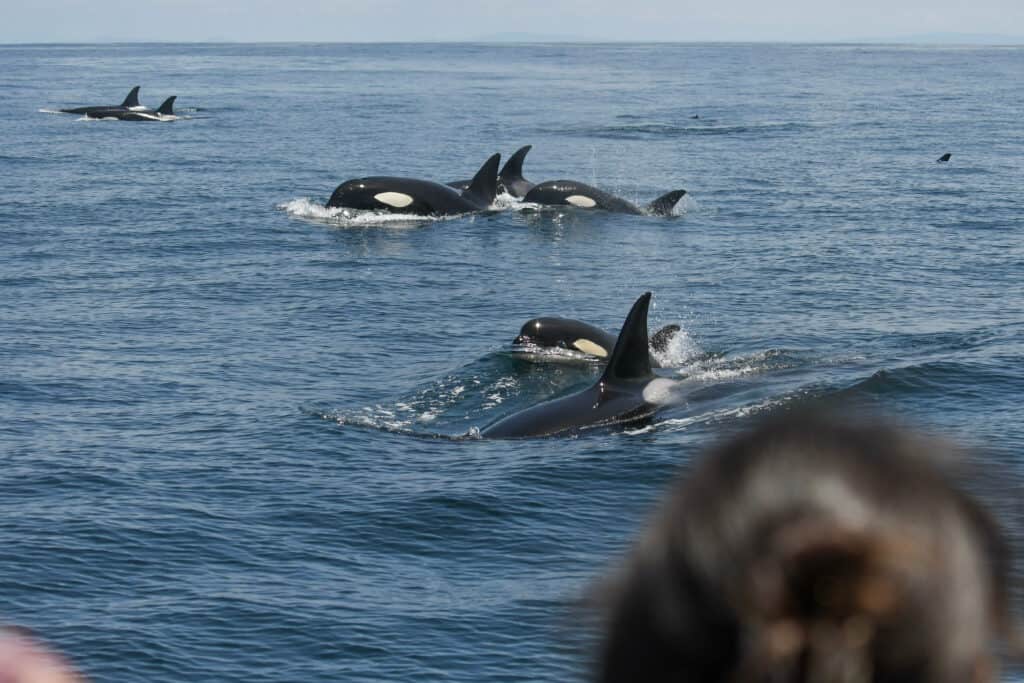
We were able to spend over 40 minutes with this large group of about 20 transient, or Bigg’s, killer whales! © Michael Pierson
About Killer Whales (Orcinus orca)
Killer whales, also known as orcas, are cetaceans (a taxonomic group that includes whales, dolphins, & porpoises) found worldwide. Killer whales are apex predators and are the only cetaceans that regularly hunt other marine mammals. This fact led them to be called “whale killers,” which later became the common name “killer whale”’ that we use today.
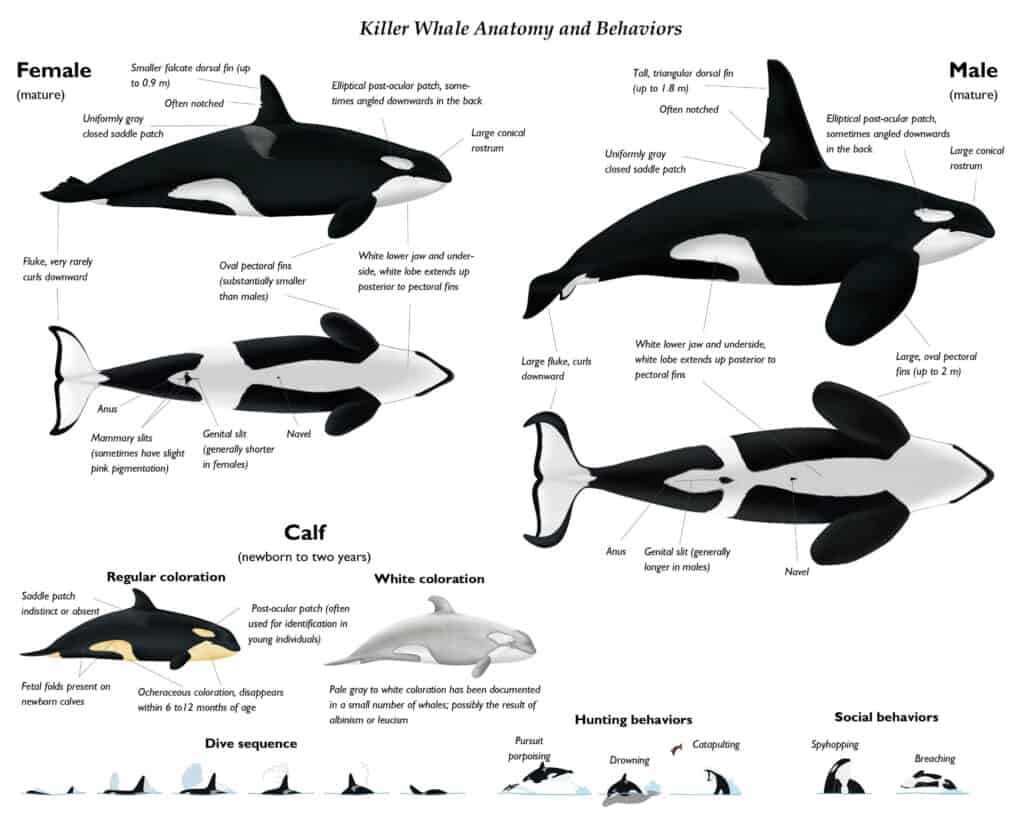
From the ‘Identification Catalog and Field Guide for Transient (Bigg’s) Killer Whales of Monterey Bay and California Waters’ © NOAA Southwest Fisheries Science Center
About Bigg’s Killer Whales
Killer whales are recognized as a single species with ten different ecotypes that differ in appearance, habitat, diet, and social structure. Off the California coast, we can find three ecotypes: resident, transient, and offshore. The transients, or Bigg’s killer whales, are the most common ecotype seen off the central California coast.
Transients usually travel in small pods of 3-10 that include a mother and her offspring, like this trio we saw in September 2021. However, these pods are dynamic, and it is not uncommon for individuals to go off on their own, associate with other pods, or for multiple pods to intermingle.
The group that we saw on this trip included multiple pods, and some of these pods have been sighted together before, such as in Monterey Bay (CA51s + CA206s), and in Puget Sound (CA172s, CA173s, + CA166).
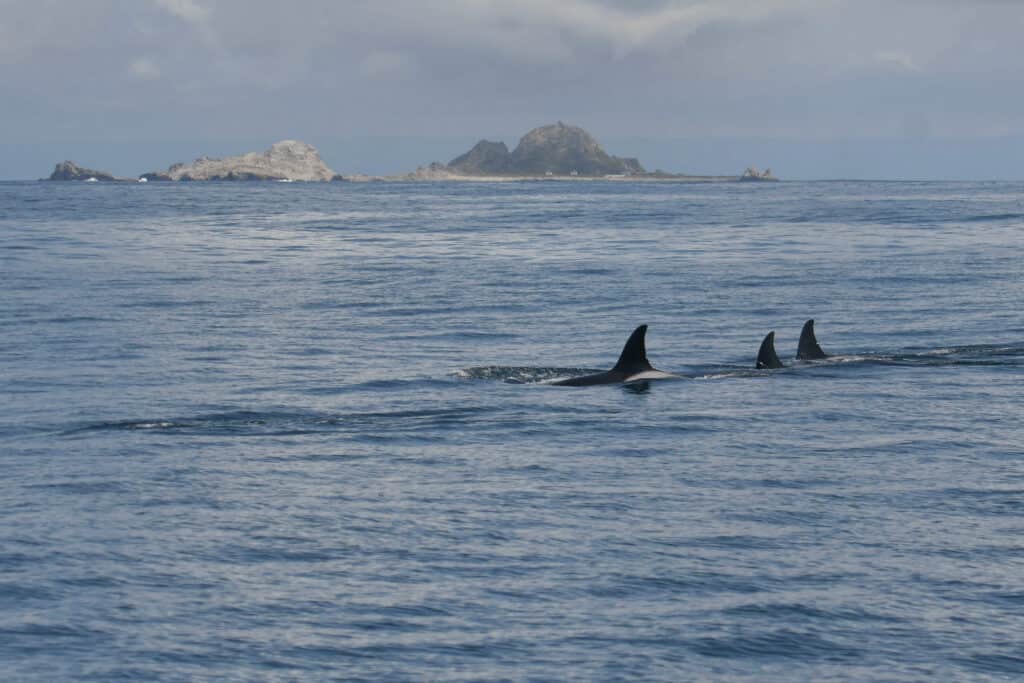
© Michael Pierson
Sources:

